The Foundation: High-Quality 3D Automotive Models
The automotive world has always been at the forefront of innovation, driven by a relentless pursuit of performance, aesthetics, and efficiency. Today, a revolutionary technology is accelerating this drive: 3D printing. What was once the domain of niche prototyping labs has now become a powerful tool for creating custom car parts, accelerating design iterations, and even fabricating end-use components. But at the heart of every successful 3D print lies a meticulously crafted digital asset – the 3D car model.
This comprehensive guide dives deep into the intricate relationship between high-quality 3D car models and the transformative power of 3D printing in the automotive sector. We’ll explore the essential technical considerations, from intricate topology and mesh integrity for successful prints to advanced material selection and post-processing techniques. Whether you’re an automotive designer looking to prototype a new concept, a custom car builder needing a bespoke part, a game developer aiming for unparalleled realism, or an artist creating stunning visualizations, understanding this synergy is crucial. We’ll journey from the digital blueprint to the tangible component, revealing how precision 3D modeling workflows enable groundbreaking physical creations and how these physical creations can, in turn, inform stunning digital renders and interactive experiences.
The Foundation: High-Quality 3D Automotive Models
Before any physical object can be printed, a robust and well-structured 3D car model must exist in the digital realm. This isn’t just about visual appeal; for 3D printing, the underlying mesh integrity and topology are paramount. A model designed primarily for high-quality rendering or game development might require different considerations when destined for fabrication. Platforms like 88cars3d.com specialize in providing models that are not only visually stunning but also built with clean geometry, making them versatile for various applications, including print preparation. Understanding the nuances of mesh structure is the first step towards successful automotive 3D printing.
The Anatomy of a Print-Ready 3D Car Model: Topology and Mesh Integrity
For 3D printing, a model must be “watertight” – meaning it has no holes, non-manifold edges, or inverted normals. These issues, often tolerable or easily fixable for rendering, can cause catastrophic failures in slicing software. Good topology, characterized by clean quad-based geometry, while not strictly required for every 3D print, simplifies mesh editing, ensures smooth surfaces, and allows for easier conversion to triangulated meshes (which are common in print formats). However, for very organic or complex shapes, triangulated meshes can be perfectly acceptable, provided they maintain complete surface integrity. Polygon counts are also critical; excessively high polygon counts can make files unwieldy and slow down slicing, while too few may result in a faceted, low-detail print. Balancing detail with file manageability, often with a target range of 200,000 to 1 million polygons for complex parts, is a professional best practice.
File Formats for Digital Design vs. 3D Printing
The digital workflow for automotive 3D design involves several file formats, each serving a specific purpose. For high-fidelity models used in professional software like 3ds Max, Blender, or Maya, formats like FBX, OBJ, BLEND, or MAX are common. These formats retain crucial information such as UV mapping, PBR materials, and scene data, essential for rendering and visualization. However, for 3D printing, the landscape shifts. The undisputed king is STL (StereoLithography), a simple format that defines object surfaces using a mesh of triangles. While universal, STL lacks color and material data. More advanced print-specific formats include OBJ (can carry color, though less consistently), and increasingly, 3MF and AMF, which support color, texture, and multiple materials within a single file, making them ideal for multi-color or multi-material prints. Understanding these distinctions is crucial for seamless conversion and successful fabrication.
Mastering 3D Printing Preparation for Automotive Parts
Even the most stunning 3D car model requires meticulous preparation before it can transition from screen to physical object. This stage, often overlooked by beginners, is where potential print failures are prevented and print quality is optimized. It involves a series of critical steps, from ensuring mesh integrity to strategically configuring the model for the printing process itself. This specialized preparation transforms a visualization-ready asset into a fabrication-ready blueprint, ensuring that the final custom 3D car part meets all technical and aesthetic requirements. Neglecting these steps can lead to wasted materials, failed prints, and frustrating delays, making them essential knowledge for anyone involved in automotive 3D printing.
Mesh Repair and Watertightness: Essential for Print Success
The golden rule for 3D printing is a “watertight” mesh. Imagine filling your digital model with water; if it leaks, it’s not watertight. This means no gaps, holes, or inverted (flipped) normals on the mesh. Software like Blender (with its 3D Print Toolbox add-on), Meshmixer, or Netfabb are invaluable for identifying and repairing these issues. Common problems include non-manifold edges (edges shared by more than two faces), intersecting geometry, and open boundaries. Repairing these often involves targeted vertex merging, edge filling, and automatic mesh repair algorithms. For instance, in Blender, using the “Make Manifold” or “Fill Holes” tools can automate much of this. A final check using a “solidify” modifier can often reveal hidden flaws by attempting to give the surface thickness. This stage is non-negotiable for producing reliable and high-quality custom 3D car parts.
Scaling, Orientation, and Support Structures
Once the mesh is clean, attention turns to how the model will interact with the 3D printer. Scaling is critical; models often need to be scaled correctly to real-world units (millimeters or inches) within the slicing software to match the desired part size. Incorrect scaling can lead to parts that don’t fit. Orientation on the print bed significantly impacts print quality and the need for support structures. Orienting a part to minimize overhangs reduces the amount of support material, saving time and improving surface finish. For example, printing a bumper bracket flat on its widest surface might reduce supports compared to printing it vertically. Support structures are temporary scaffolding generated by the slicer to hold up overhangs and bridges. They are crucial for complex automotive shapes but must be carefully planned to minimize scarring on visible surfaces and ensure easy removal. Different slicers (e.g., PrusaSlicer, Cura) offer various support types (tree, grid, linear) which can be optimized based on the model’s geometry and the printer’s capabilities.
From Digital Sculpt to Physical Reality: The 3D Printing Process
The journey from a digital 3D car model to a tangible object culminates in the 3D printing process itself. This stage involves selecting the right technology, understanding how your model is translated into machine instructions, and executing the print with precision. The diverse range of 3D printing technologies offers different capabilities in terms of material properties, surface finish, and part complexity, making the choice dependent on the specific application of the custom 3D car part. From rapid prototyping to creating functional components, knowing the strengths and weaknesses of each method is key to achieving optimal results in automotive 3D design and manufacturing.
Understanding Different 3D Printing Technologies (FDM, SLA, SLS)
The landscape of 3D printing offers several core technologies, each suited for different automotive 3D design needs. FDM (Fused Deposition Modeling) is the most common and accessible, melting and extruding thermoplastic filaments layer by layer. It’s excellent for rapid prototyping, jigs, fixtures, and non-structural components using materials like ABS, PLA, and PETG. However, FDM parts can show visible layer lines and might have anisotropic strength. For finer details and smoother finishes, SLA (Stereolithography) or DLP (Digital Light Processing) printers use a laser or projector to cure liquid resin. These are ideal for highly detailed aesthetic parts, small functional components, and master patterns for molds, offering superior surface resolution. For robust, functional prototypes and end-use parts with complex geometries, SLS (Selective Laser Sintering) uses a laser to fuse powdered polymers (like nylon) layer by layer. SLS parts are strong, durable, have excellent surface finish, and require no support structures, making them perfect for complex brackets or intake manifolds, though the technology is more expensive and specialized.
Slicer Software: Bridging the Gap
Slicer software is the critical intermediary between your 3D car model and the 3D printer. Programs like PrusaSlicer, Cura, Simplify3D, or specific vendor slicers take your STL (or 3MF/OBJ) file and “slice” it into hundreds or thousands of thin horizontal layers. For each layer, they generate toolpaths – precise instructions for the printer’s nozzle or laser. Key settings within the slicer directly impact print quality, speed, and material usage. These include: layer height (thinner layers mean higher detail but longer print times), infill density and pattern (affecting part strength, weight, and material consumption), print speed, temperature settings (for nozzle and bed), and retraction settings (to prevent stringing). Advanced settings also cover first layer adhesion, support generation parameters, and seam placement. Mastering these parameters requires experimentation and a deep understanding of both your 3D car model‘s geometry and your specific printer’s capabilities, crucial for bringing your automotive 3D design to life with precision.
Advanced Material Selection and Post-Processing for Automotive Prints
The choice of material and the subsequent post-processing steps are as critical as the initial 3D car model and printing process for creating truly functional and aesthetically pleasing custom 3D car parts. Automotive applications demand materials that can withstand varying temperatures, stresses, and environmental factors. Beyond merely printing a part, the finishing touches can transform a raw 3D print into a polished, production-ready component that seamlessly integrates into a vehicle. This stage is where the practicality and durability of your automotive 3D design are truly tested, bridging the gap between a prototype and a usable part.
Performance Plastics and Composites for Automotive Applications
The materials available for 3D printing have expanded dramatically, offering a range of properties suitable for demanding automotive 3D design applications. For functional prototypes and some end-use parts, engineering plastics like ABS (Acrylonitrile Butadiene Styrene) offer good impact resistance and thermal stability. PETG (Polyethylene Terephthalate Glycol) provides excellent strength and chemical resistance. High-performance polymers such as Nylon (Polyamide), especially in its carbon fiber or glass fiber reinforced variants, offer exceptional strength-to-weight ratios, stiffness, and heat resistance, making them ideal for structural brackets, custom intake manifolds, or engine bay components. Even more exotic materials like PEEK (Polyether Ether Ketone) or PEI (Polyetherimide/ULTEM) are gaining traction for their extreme heat and chemical resistance, suitable for specialized, high-stress components. When selecting materials, considerations like heat deflection temperature (HDT), tensile strength, impact resistance, and chemical compatibility are paramount for ensuring the custom 3D car part performs as expected in its intended automotive environment.
Finishing Touches: Sanding, Painting, and Assembly
Raw 3D prints, particularly from FDM machines, often require post-processing to achieve the desired surface finish, aesthetic quality, and dimensional accuracy. Sanding is a common step to remove layer lines and smooth surfaces, typically starting with coarse grits and moving to finer ones. For parts requiring a high-gloss finish, specialized smoothing techniques like vapor smoothing (using acetone for ABS or MEK for ASA) can melt the outer layers, creating a seamless, shiny surface. Priming and painting are essential for aesthetic appeal and protection. Automotive-grade primers and paints can be applied to match existing vehicle colors or create custom finishes. For multi-component assemblies, precise drilling, tapping, and fastening are necessary, requiring careful design considerations for tolerances and hardware integration. Other post-processing might include resin curing for SLA prints, support removal (often a delicate process for intricate parts), and even electroplating for enhanced conductivity or metallic appearance. The quality of these finishing touches directly impacts how professional and functional the final custom 3D car part appears and performs.
Beyond Prototyping: Applications of Custom 3D Printed Car Parts
While rapid prototyping remains a cornerstone of 3D printing in the automotive industry, its capabilities have evolved far beyond mere mock-ups. Today, custom 3D car parts are finding their way into a myriad of real-world applications, from breathing new life into classic vehicles to optimizing performance in competitive motorsports. This shift highlights the technology’s maturity and its increasing role in direct manufacturing, offering unprecedented flexibility and efficiency in creating unique or otherwise unobtainable components. The ability to produce bespoke parts on demand, informed by precise automotive 3D design, is revolutionizing how we approach vehicle repair, customization, and performance enhancement.
Restoration, Customization, and Motorsports
For classic car enthusiasts and restorers, 3D printing is a game-changer. Obsolete parts, no longer manufactured, can be digitally scanned, reverse-engineered, and then 3D printed, bringing rare vehicles back to their former glory. This applies to intricate trim pieces, dashboard components, or unique engine brackets. For customization, the possibilities are virtually endless. From personalized interior accents, bespoke aerodynamic elements, to unique body kits, automotive 3D design allows individuals to truly make a vehicle their own. Enthusiasts can design and print custom shifter knobs, gauge pods, or ventilation grilles tailored to their exact specifications. In motorsports, where every gram and every aerodynamic tweak counts, 3D printing enables rapid iteration of performance-enhancing parts like lightweight intake manifolds, custom air ducts for brake cooling, or aerodynamic spoilers. Teams can test designs in virtual wind tunnels, then quickly print and test physical prototypes, significantly shortening development cycles and gaining a competitive edge. This iterative process, often starting with a high-quality 3D car model from platforms like 88cars3d.com, allows for unprecedented precision and speed.
Jig, Fixture, and Tooling Creation
Beyond direct automotive parts, 3D printing plays a crucial role in manufacturing support. The creation of specialized jigs, fixtures, and tooling significantly streamlines traditional manufacturing processes within the automotive industry. Custom jigs can hold complex components securely during assembly, ensuring precision and repeatability. Fixtures can guide drilling or cutting operations, reducing human error and improving efficiency. Imagine a bespoke fixture to hold a uniquely shaped custom bumper panel while welding or painting – this can be 3D printed quickly and cost-effectively, rather than machined from metal. Furthermore, 3D printed molds can be used for short-run composite parts or vacuum forming. These tools, precisely designed from a 3D car model or specific component model, enhance safety, reduce production time, and lower costs by eliminating the need for expensive, time-consuming traditional machining methods for one-off or low-volume tools. This application alone saves countless hours and resources in automotive production and repair shops.
The Synergy of 3D Printing with Digital Visualization and Game Development
The journey of a 3D car model often begins and ends in the digital realm, even if it passes through the physical world via 3D printing. For professionals in visualization, advertising, and game development, the same high-quality 3D assets that serve as the blueprint for printed parts are also invaluable for creating stunning digital experiences. There’s a powerful synergy: a print-ready model, with its clean topology and accurate dimensions, forms an excellent base for creating hyper-realistic renders or optimizing for interactive environments. This dual utility underscores the importance of sourcing versatile and technically sound 3D car models from resources like 88cars3d.com, which are designed to excel in both physical fabrication and digital representation.
Leveraging PBR Materials and Rendering for Pre-Visualization
Before committing to a physical 3D print, designers can utilize advanced rendering techniques to visualize their custom 3D car parts with incredible realism. PBR (Physically Based Rendering) materials, coupled with sophisticated shader networks in software like 3ds Max (Corona, V-Ray), Blender (Cycles), or Maya (Arnold), allow for accurate representation of how a printed part will look in various finishes, colors, and lighting conditions. This includes simulating metallic sheens, matte plastics, carbon fiber textures, and even wear and tear. High-resolution UV mapping ensures that these detailed textures are applied correctly without distortion. By setting up realistic lighting and environment setups, designers can see how a 3D printed custom spoiler, for example, would appear on a virtual car model in a studio, urban, or natural setting. This automotive rendering pre-visualization is crucial for client approvals, design refinement, and marketing, saving significant time and material costs by identifying potential issues before any physical printing begins.
Game-Ready Assets and AR/VR Experiences from Print-Ready Models
The clean, optimized geometry required for a good 3D print also provides an excellent foundation for creating high-performance game assets and immersive AR/VR experiences. While print models often have higher polygon counts than typical game models, they possess crucial attributes like watertightness and proper scaling. These can be efficiently retopologized, simplified, and optimized with techniques like LODs (Levels of Detail), texture atlasing, and draw call reduction for real-time engines like Unity or Unreal Engine. Imagine designing a custom 3D car part, printing it for prototyping, and then using the same base model (optimized) to showcase it within an interactive AR app where users can virtually “place” the part on their actual car. File formats like GLB and USDZ are specifically optimized for AR/VR, enabling lightweight, portable assets. This convergence means that a single, well-crafted 3D car model can serve as both a blueprint for a physical object and an interactive element in a virtual showroom or a racing game, offering unparalleled versatility and value across different media.
Future Trends and Accessibility in Automotive 3D Printing
The landscape of automotive 3D printing is continuously evolving, pushing boundaries in material science, printer capabilities, and accessibility. What was once an exclusive technology is becoming increasingly available to a wider audience, from professional design studios to individual enthusiasts. This democratization of fabrication, driven by advancements in both hardware and software, promises a future where customized and specialized 3D car models can be rapidly transformed into physical reality for an ever-expanding range of applications. Understanding these emerging trends is crucial for staying ahead in the dynamic world of automotive 3D design and manufacturing.
Mass Customization and On-Demand Manufacturing
One of the most exciting trends in automotive 3D printing is the move towards mass customization and on-demand manufacturing. Instead of mass-producing identical parts, manufacturers can now offer personalized components tailored to individual customer preferences or specific vehicle requirements. This could range from custom interior trim with unique textures or embossed names to perfectly fitting performance parts for rare or modified vehicles. The digital nature of 3D car models makes it simple to alter a design and print a unique version without retooling. This “print-on-demand” model also significantly reduces waste and inventory costs, as parts are only produced when needed. For instance, a vintage car enthusiast might order a custom-designed headlight bezel, which is then 3D printed specifically for their vehicle, eliminating the need to search for scarce original parts. This paradigm shift, facilitated by readily available high-quality 3D car models and efficient 3D printing services, promises a future of highly personalized and sustainable automotive solutions.
Democratizing Design: Access to High-Quality 3D Car Models
The increasing accessibility of professional-grade 3D printing technology is matched by the growing availability of high-quality 3D car models. Platforms like 88cars3d.com play a pivotal role in this democratization process, offering meticulously crafted 3D assets that serve as the perfect starting point for both digital visualization and physical fabrication. Previously, creating detailed, print-ready automotive 3D designs required extensive modeling expertise and significant time investment. Now, designers, engineers, students, and enthusiasts can leverage pre-made, optimized models, modifying them as needed for specific projects. This lowers the barrier to entry for custom projects, allowing more individuals to experiment with 3D printing custom car parts, develop unique concepts, and even learn complex 3D modeling workflows by studying expert-created geometry. This ecosystem of accessible models and printing technology fosters innovation and expands the reach of advanced automotive design and manufacturing to a much broader audience.
Conclusion
The convergence of advanced 3D modeling and cutting-edge 3D printing technology has unlocked unprecedented opportunities within the automotive industry. From concept ideation and rapid prototyping to the creation of bespoke custom 3D car parts for restoration, customization, and motorsports, the digital workflow is transforming how vehicles are designed, manufactured, and maintained. We’ve explored the critical technical aspects, from ensuring watertight topology and optimal UV mapping in your 3D car models to selecting the right printing materials and mastering post-processing techniques.
The ability to seamlessly transition from intricate automotive 3D design to physical reality, while also leveraging those same assets for stunning automotive rendering and interactive AR/VR experiences, showcases the incredible versatility of today’s digital tools. By understanding the nuances of file formats, print preparation, and material science, artists, engineers, and enthusiasts alike can harness this power. Whether you’re sourcing high-fidelity models for your next project from marketplaces such as 88cars3d.com or fabricating a unique component for your vehicle, the future of automotive design is undoubtedly hybrid – a perfect blend of digital precision and physical innovation. Embrace these tools, refine your skills, and drive the future of automotive creativity.
Featured 3D Car Models
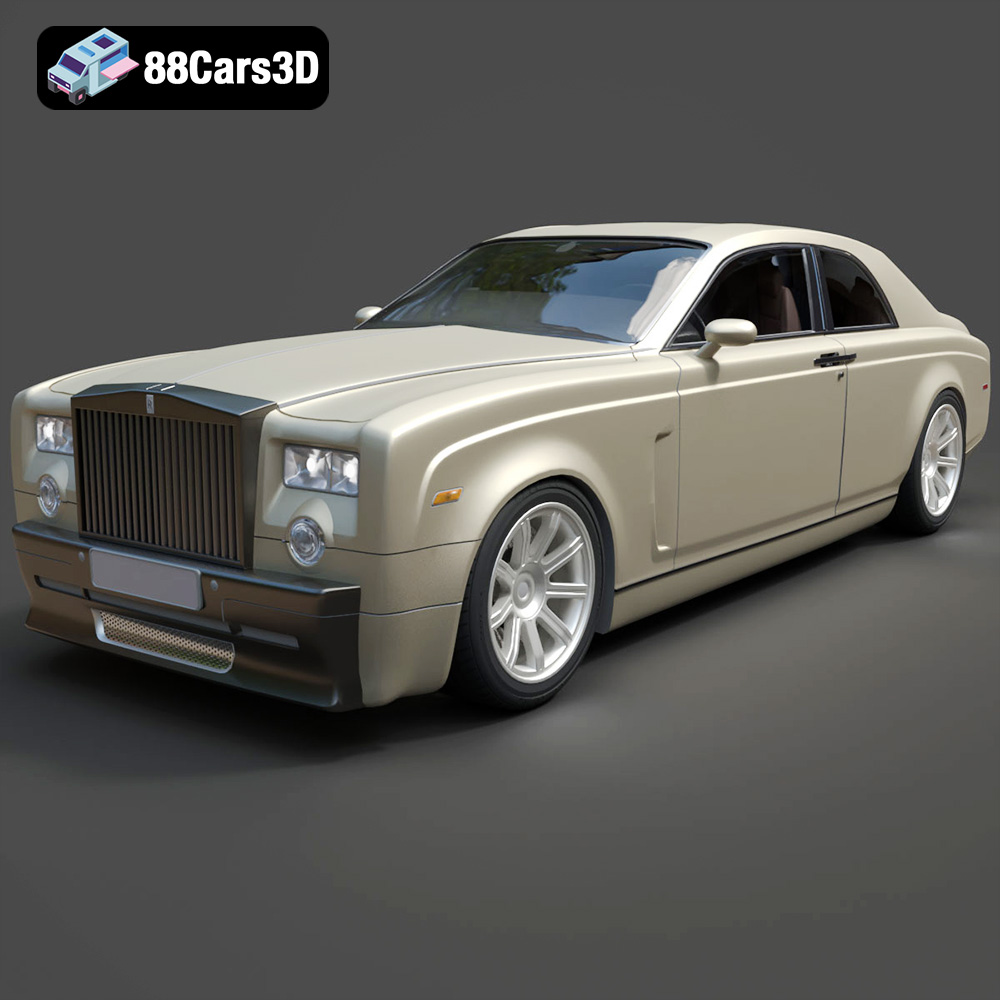
Rolls-Royce Phantom Coupe 3D Model
Texture: Yes
Material: Yes
Download the Rolls-Royce Phantom Coupe 3D Model featuring clean geometry, realistic detailing, and a fully modeled interior. Includes .blend, .fbx, .obj, .glb, .stl, .ply, .unreal, and .max formats for rendering, simulation, and game development.
Price: $6.99
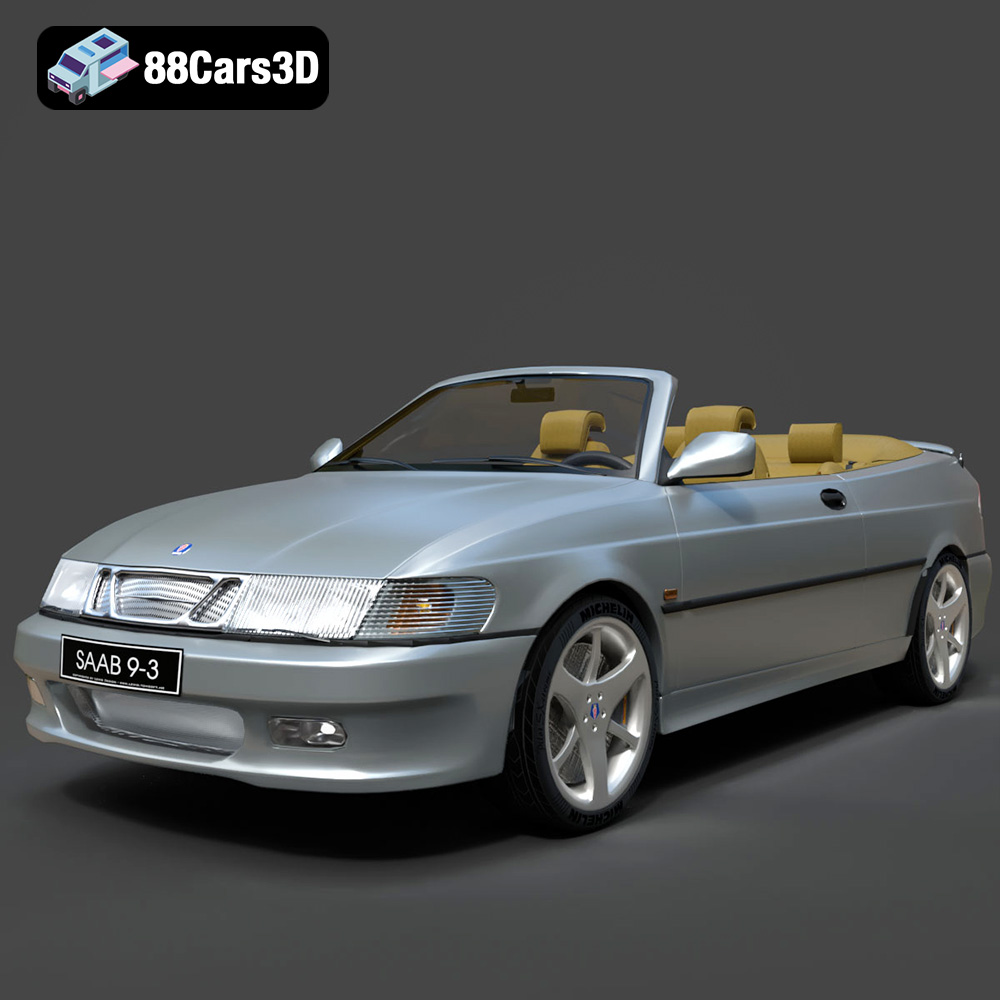
Saab 9-3 Convertible 2009 3D Model
Texture: Yes
Material: Yes
Download the Saab 9-3 Convertible 2009 3D Model featuring clean geometry, realistic detailing, and a fully modeled interior. Includes .blend, .fbx, .obj, .glb, .stl, .ply, .unreal, and .max formats for rendering, simulation, and game development.
Price: $6.99

Saab 9-3 2009 3D Model
Texture: Yes
Material: Yes
Download the Saab 9-3 2009 3D Model featuring clean geometry, realistic detailing, and a fully modeled interior. Includes .blend, .fbx, .obj, .glb, .stl, .ply, .unreal, and .max formats for rendering, simulation, and game development.
Price: $6.99

Saab 9-5 2009 3D Model
Texture: Yes
Material: Yes
Download the Saab 9-5 2009 3D Model featuring clean geometry, realistic detailing, and a fully modeled interior. Includes .blend, .fbx, .obj, .glb, .stl, .ply, .unreal, and .max formats for rendering, simulation, and game development.
Price: $6.99
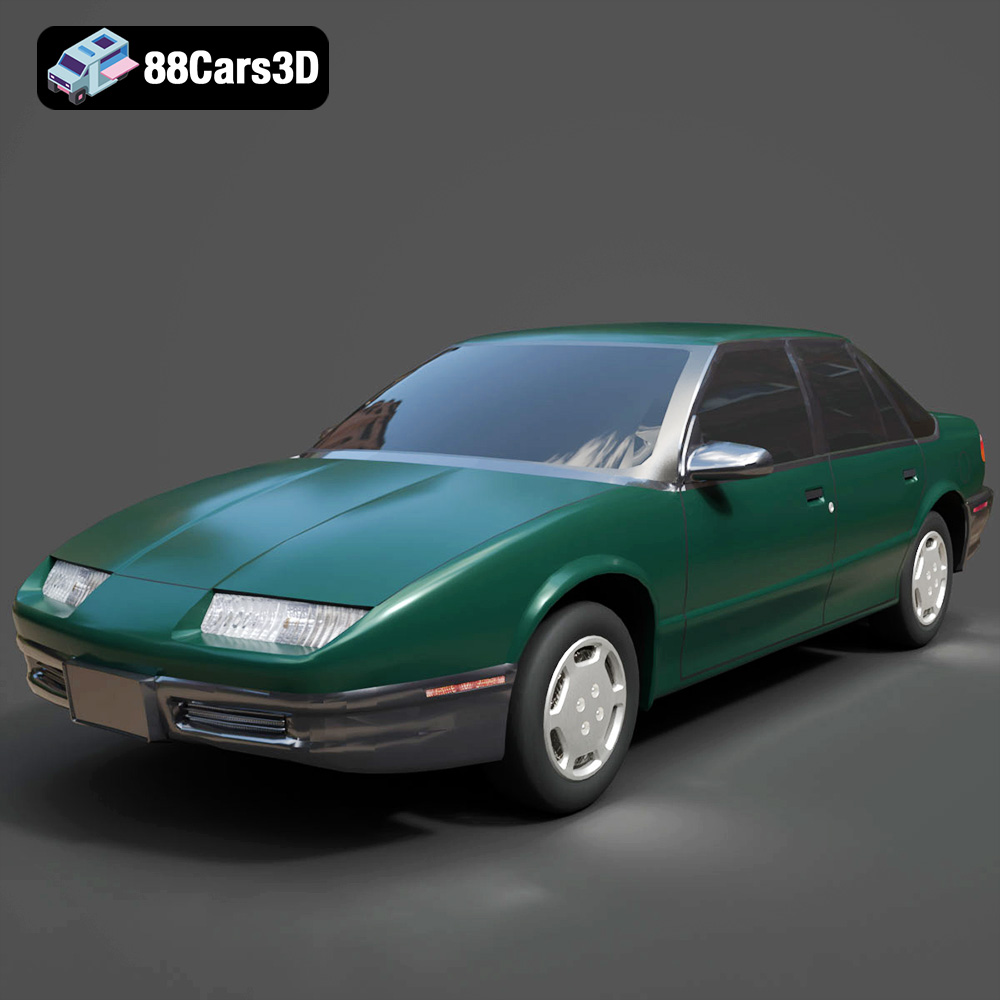
Saturn SL-009 3D Model
Texture: Yes
Material: Yes
Download the Saturn SL-009 3D Model featuring clean geometry, realistic detailing, and a fully modeled interior. Includes .blend, .fbx, .obj, .glb, .stl, .ply, .unreal, and .max formats for rendering, simulation, and game development.
Price: $6.99
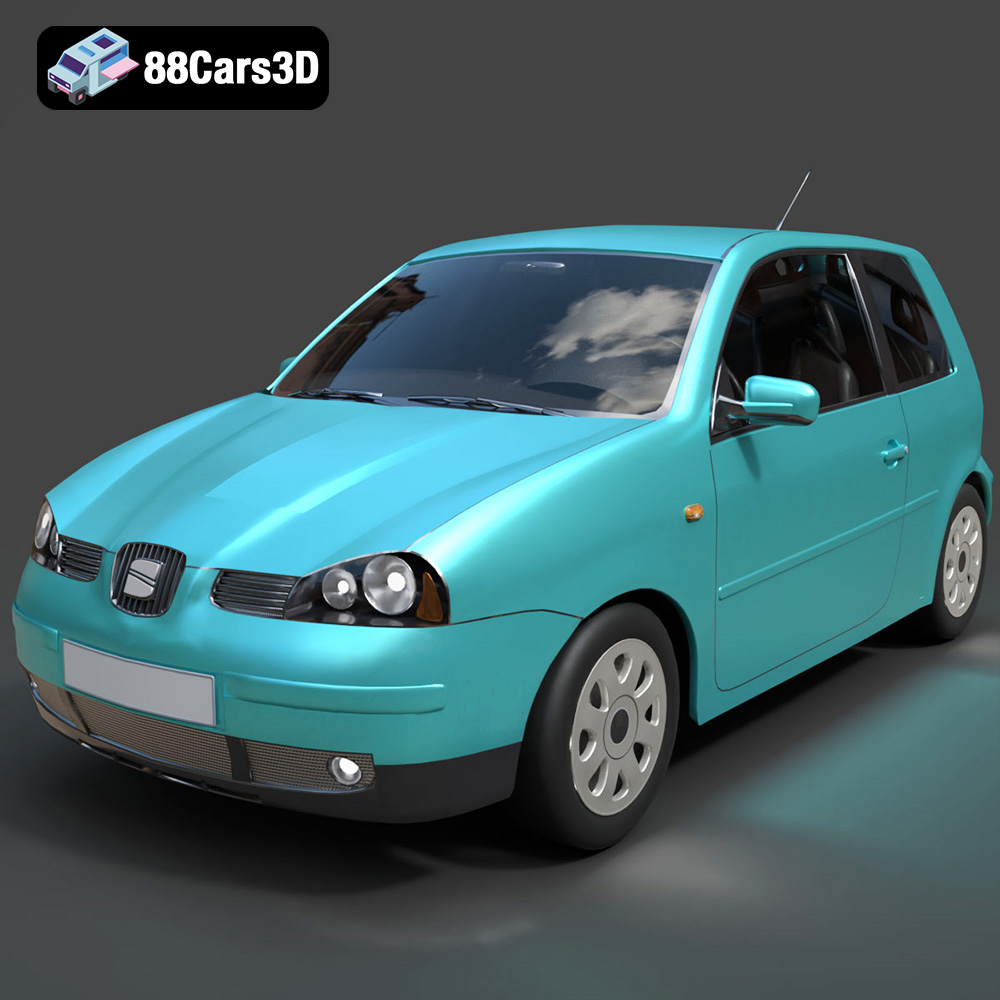
Seat Arosa 1997 3D Model
Texture: Yes
Material: Yes
Download the Seat Arosa 1997 3D Model featuring clean geometry, realistic detailing, and a fully modeled interior. Includes .blend, .fbx, .obj, .glb, .stl, .ply, .unreal, and .max formats for rendering, simulation, and game development.
Price: $6.99
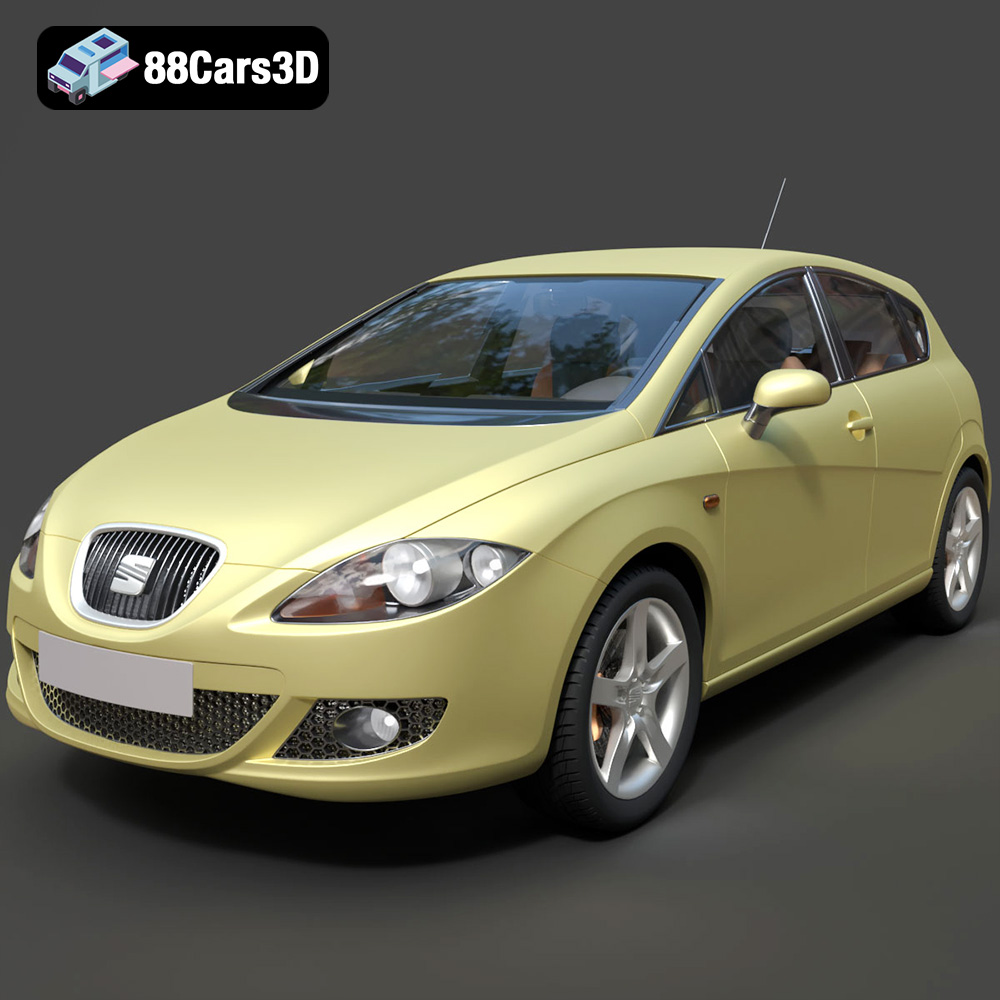
Seat Leon 2009 3D Model
Texture: Yes
Material: Yes
Download the Seat Leon 2009 3D Model featuring clean geometry, realistic detailing, and a fully modeled interior. Includes .blend, .fbx, .obj, .glb, .stl, .ply, .unreal, and .max formats for rendering, simulation, and game development.
Price: $6.99
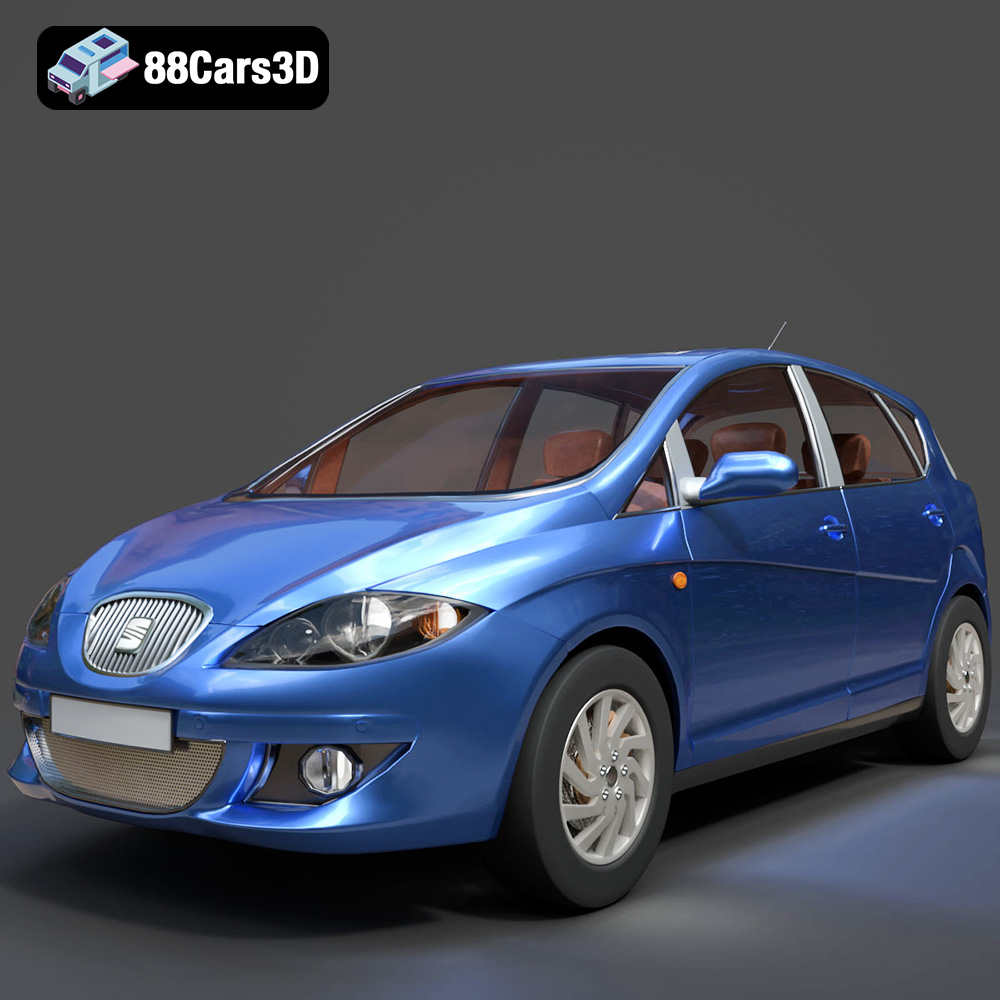
Seat Toledo 2009 3D Model
Texture: Yes
Material: Yes
Download the Seat Toledo 2009 3D Model featuring clean geometry, realistic detailing, and a fully modeled interior. Includes .blend, .fbx, .obj, .glb, .stl, .ply, .unreal, and .max formats for rendering, simulation, and game development.
Price: $6.99
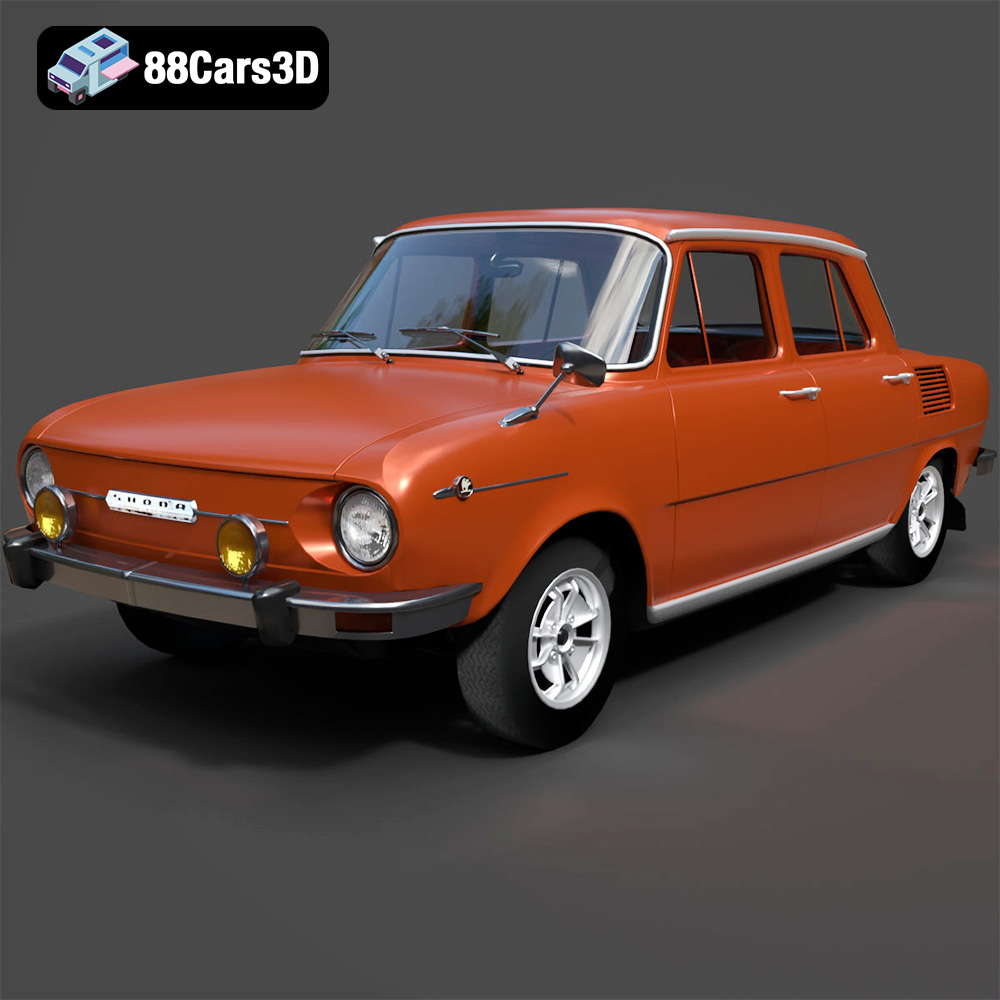
Skoda 100 L 1970 3D Model
Texture: Yes
Material: Yes
Download the Skoda 100 L 1970 3D Model featuring clean geometry, realistic detailing, and a fully modeled interior. Includes .blend, .fbx, .obj, .glb, .stl, .ply, .unreal, and .max formats for rendering, simulation, and game development.
Price: $6.99
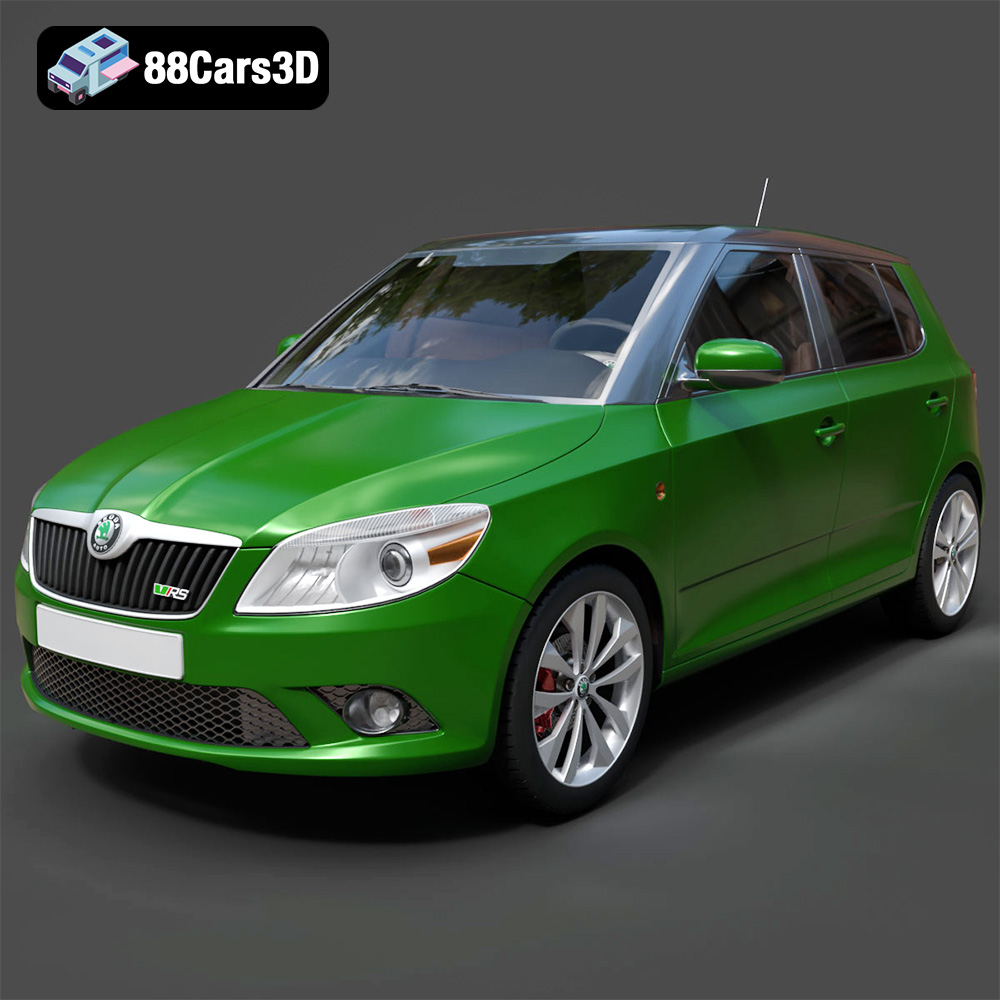
Skoda Fabia RS 2011 3D Model
Download the Skoda Fabia RS 2011 3D model, an accurately detailed vehicle asset perfect for game development, rendering, and AR/VR applications. Includes multiple formats for versatile use.
Price: $6.99
